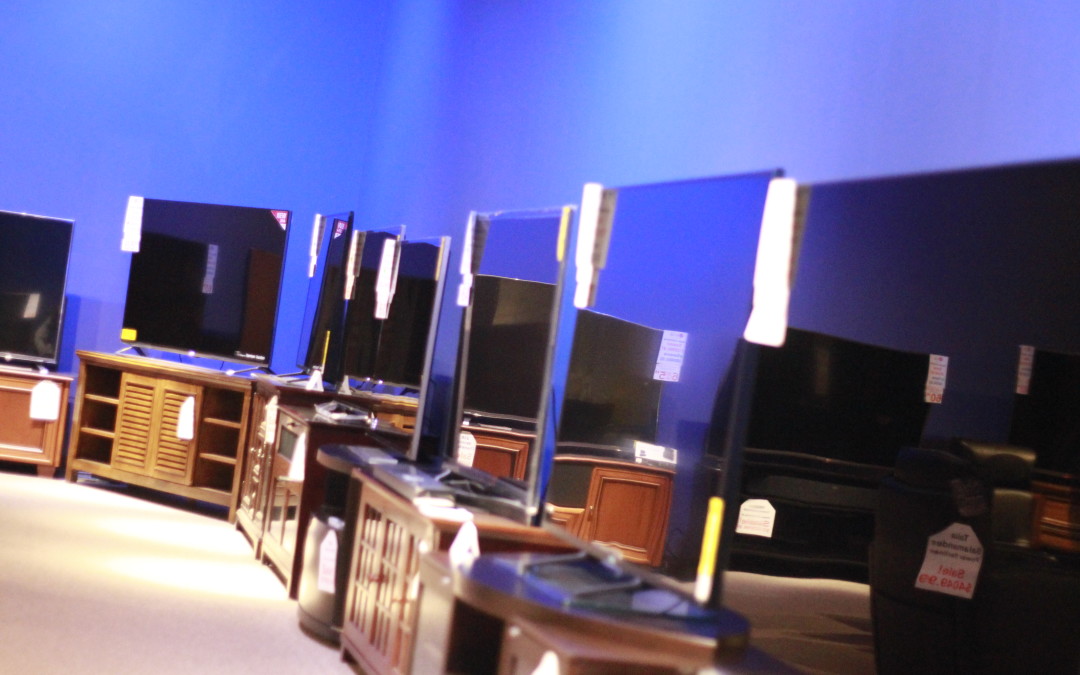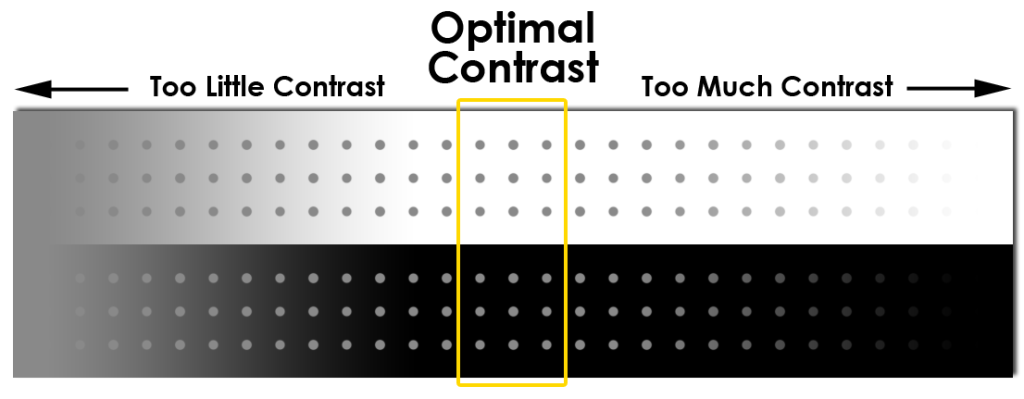Shopping for a TV used to be a very simple affair. The only decisions you had to make involved size and cabinet style. Then you could take it home, plug it in and go!
The world of TV shopping is vastly different today thanks in large part to one thing: the spec sheet.
Every brand has their own terminology to tout the color, contrast and crispness of their picture – each trying to edge out other brands by the narrowest of margins. So how are you supposed to know what specs are best? How do you choose the best TV out there?
Here’s the secret:
Yes, your eyeballs! Forget the spec sheet and trust your eyes. What good is this stat or that stat if you don’t enjoy the picture? The TV that’s best for you is all about YOUR personal preference.
Don’t get us wrong – there are still a few things you’ll want to consider while your eyeballs are scanning screens. Here are our 9 tips for selecting the best TV:
1. Compare
Rather than going into a store with one TV in mind, keep an open mind and visually compare TVs with one another. Often they’ll be playing the same video, so it will be easy to see the differences.
2. Back It Up
When you’re evaluating TVs in a store you’re likely to stand quite close, especially when comparing. This is a big no-no! Unless your couch is 3 feet away from your TV at home, comparing at such a close distance won’t replicate your home use. Take a step (or ten) back to compare TVs from a place that approximates the distance you’ll be watching it from at home.
3. Reflection
Consider what your TV room at home looks like. Do you have to contend with direct glare, or is there a lot of ambient light? Ask which screens are best for glare. If you’re considering a curved TV, it could be an advantage or disadvantage depending upon where your windows are located. Mention your window layout to your experienced sales professional.
4. Clarity
Yes, clarity is important, but you’ll want to trust your eye over the spec sheet. The differences between 4K and 1080p decrease as the distance from the screen increases, so clarity is largely dependent on the distance from which you’ll be watching the TV. This is why #2 is so important.
5. Vibrancy and Range of Color
Study the breadth and vibrancy of color while you compare between models. Some televisions are able to display a wider range of colors than others, yet you want to ensure the colors aren’t so vibrant that the picture becomes unrealistic. This comparison is all about your personal preference. What’s pleasing to someone else’s eye might not be pleasing to yours, and vice versa.
6. Contrast
Contrast refers to the difference in purity between white and black in your picture. Ideal contrast is a balancing act. In the diagram below, you can see how too little contrast can leave a picture hazy, but too much contrast can blow out or crush details. When comparing a TV, look at the whites and blacks: are they pure while still retaining detail? If so, you’ve found the balance.
7. Realistic Picture
The picture shouldn’t seem cartoonish, or look like a soap opera (unless you’re viewing a soap opera). Ideally you want a picture that imitates real life as closely as possible. Realistic picture is hard to quantify with numbers on a spec sheet, so this evaluation is something that should really be done “eyes on.”
8. One Size Doesn’t Fit All
We’ve covered picture quality, but what about size? If you search online for “ideal TV size” you’ll find some formulas that calculate picture height and viewing distance to make the whole process very scientific. But the process of buying and using a TV just isn’t that sterile. Our motto is simple: Get what fits. Getting what fits could mean dimensionally or aesthetically or both. Look for a size that takes advantage of your available space. Something else to keep in mind is this: picture quality and technology is often better in televisions 55″ and up. Manufacturers throw their best at larger TVs because the larger size allows viewers to better enjoy the innovations that make the picture better.
If that sounds large, just remember that the bezel on TVs today (the frame around the screen) is much smaller than it was even a few years ago. This allows you to enjoy a large picture without the added inches wasted by the bezel.
9. Product and Service Quality
Something people don’t consider often enough is the quality of the product they’re buying, and the integrity of the company they’re working with. It’s easy to get distracted by brilliant pictures and fancy terminology, but when you’re investing a significant sum into a new TV you want to consider what happens after the sale. Is the TV you’re purchasing built well, and by a reputable company? How is the TV going to be serviced? Can it be repaired, and who do you call when you have a question or need service?
Here at Suess Electronics, we take service seriously. We only sell products made by reputable and reliable brands; top-tier products that can can be serviced and repaired instead of thrown away. Have a question? Call the store. Our staff are experts with decades of experience, and we can answer your questions promptly – no hold music necessary. Whenever your equipment needs service, it’s done right here in our master service center by our highly-trained technicians.
When you’re trying to decide which TV to purchase, don’t forget about the importance of where you purchase it from. We’re here for the long haul, and we’ll make sure your new TV is too.




